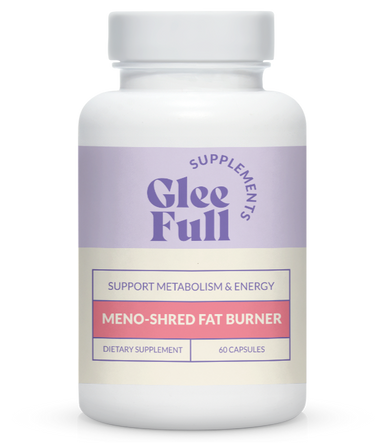Your Cart





As we age, joint, bone, and tendon health become increasingly important. Unfortunately, it is not uncommon for men and women to experience joint pain as they age into their 50s and beyond. There are several reasons why this occurs, including changes in the anatomy of the body, wear and tear on the joints, and inflammation.
The human body is made up of 206 bones that are connected by joints, which are held together by tendons and ligaments. The joints are surrounded by a capsule that contains synovial fluid, which lubricates the joint and provides nutrients to the cartilage. Cartilage is a flexible tissue that covers the ends of the bones and allows them to move smoothly against each other. It also serves as a shock absorber, reducing the impact on the joints during movement.
As we age, several changes occur in the anatomy of the joints, bones, and tendons. Cartilage becomes thinner and less flexible, reducing the cushioning between the bones. This can cause the bones to rub against each other, leading to pain and inflammation. The tendons and ligaments may also become less elastic, reducing the range of motion in the joints. Additionally, the bones may become weaker, making them more susceptible to fractures.
The joints are subjected to a lot of wear and tear throughout our lives, which can lead to joint pain as we age.
This wear and tear can be caused by a variety of factors, including repetitive motions, trauma, and obesity.
Repetitive motions, such as those performed during sports or manual labor, can cause microtrauma to the joints over time. Trauma, such as a fall or a car accident, can also damage the joints and lead to pain. Obesity can place extra stress on the joints, causing them to wear down more quickly.
Inflammation is a normal response by the body to injury or infection. However, chronic inflammation can cause damage to the joints, leading to pain and stiffness. Chronic inflammation can be caused by a variety of factors, including autoimmune disorders, infections, and environmental toxins.

The best exercises for healthy joints are low-impact exercises that help to improve joint mobility, flexibility, and strength without putting too much stress on the joints. Here are some of the best exercises for healthy joints:Walking: Walking is a great low-impact exercise that can be done almost anywhere and is suitable for people of all fitness levels. Walking can help to improve joint mobility and flexibility, as well as strengthen the muscles that support the joints.
Cycling: Cycling is another low-impact exercise that is great for joint health, particularly in the knees and hips. It provides a good cardiovascular workout while also building leg strength and improving joint mobility.
Swimming: Swimming is a full-body workout that is particularly beneficial for joint health as it provides a low-impact environment for exercise. Swimming can help to improve joint mobility, flexibility, and strength, and is a great option for people with arthritis or other joint problems.
Yoga: Yoga is an excellent exercise for joint health as it emphasizes flexibility, balance, and strength. Many yoga poses can help to improve joint mobility and flexibility, and the practice can also help to reduce stress and improve overall fitness.
Strength training: Strength training exercises can help to build muscle and support the joints, particularly in the knees, hips, and shoulders. Weightlifting, resistance band exercises, and bodyweight exercises like squats and lunges can all be effective for joint health.
Carrying excess weight can have a significant impact on your joints, particularly on the weight-bearing joints such as the knees, hips, and ankles. The extra weight puts added pressure on these joints, leading to wear and tear and potential damage over time.
Here are some ways in which being overweight can affect your joints:
Increased pressure on joints: Excess weight puts increased pressure on your joints, which can lead to the breakdown of cartilage in your joints, causing pain and inflammation.
Osteoarthritis: Osteoarthritis is a degenerative joint disease that occurs when the cartilage that cushions the joints wears down over time. Being overweight can increase the risk of developing osteoarthritis, particularly in the knees and hips.
Inflammation: Fat cells produce cytokines, which are inflammatory molecules that can cause joint inflammation and pain.
Difficulty exercising: Carrying excess weight can make it more difficult to exercise, which can lead to further joint problems. Exercise helps to keep your joints healthy and mobile, and lack of exercise can lead to stiffness and pain.
Increased risk of injury: Being overweight can increase your risk of joint injury, as the extra weight can put added strain on your joints during physical activities.
Slower recovery: If you do suffer a joint injury, being overweight can make it more difficult for your body to heal and recover, as excess weight can slow down the healing process.
Being overweight can have a significant impact on your joints, increasing the risk of joint damage, inflammation, and pain. Maintaining a healthy weight and engaging in regular exercise can help to keep your joints healthy and reduce the risk of joint problems.
Incorporate regular physical activity into your routine: Exercise is essential for maintaining healthy joints, reducing stiffness, and promoting flexibility. Incorporating low-impact activities like yoga or swimming can be beneficial. Glucosamine is a supplement that can also help support healthy joints.
Maintain a healthy weight: Excess weight can put added pressure on your joints and contribute to joint pain. A balanced diet, regular exercise, and a focus on maintaining a healthy weight can help reduce stress on your joints.
Avoid Processed foods, red meat and dairy products: Highly processed foods, such as fast food, snacks, and baked goods, contain high amounts of refined sugars, unhealthy fats, and additives. These substances can trigger inflammation in the body, including the joints. Similarly dairy products, such as milk, cheese, and butter, contain a protein called casein, which can cause inflammation in some people. for whole foods such as fruits, vegetables, whole grains, and lean proteins instead.
Stretch daily: Regular stretching can help keep joints flexible and reduce stiffness. Set aside a few minutes each day to stretch your muscles and joints, focusing on areas that feel tight or sore.
Practice good posture: Poor posture can place extra stress on your joints, leading to pain and discomfort. Practice good posture by keeping your shoulders back, chin up, and core engaged throughout the day.
Take Boswellia serrata supplements: Boswellia serrata is an herb that has been used in traditional Ayurvedic medicine to support healthy joint function. Supplements containing Boswellia serrata extract can help reduce inflammation and alleviate joint pain. Gleeful Supps Total 360 is our favourite source of this.
Use white willow bark supplements: White willow bark contains a compound called salicin, which is similar to aspirin. It has been shown to have pain-relieving properties and can be useful in reducing joint pain. Supplements containing white willow bark can be a natural way to alleviate joint pain without the side effects associated with non-steroidal anti-inflammatory drugs (NSAIDs). Total 360 contains this in the purest form.
It's very important to take these nutrients in a perfect ratio that allows the body to absorb it well. So this is why Gleefull Supps Total Joint 360 has always been my number 1 recommended product for joint health.
So pair a healthy life style, constant movement, with these essential nutrients and you'll be free of any joint pain!